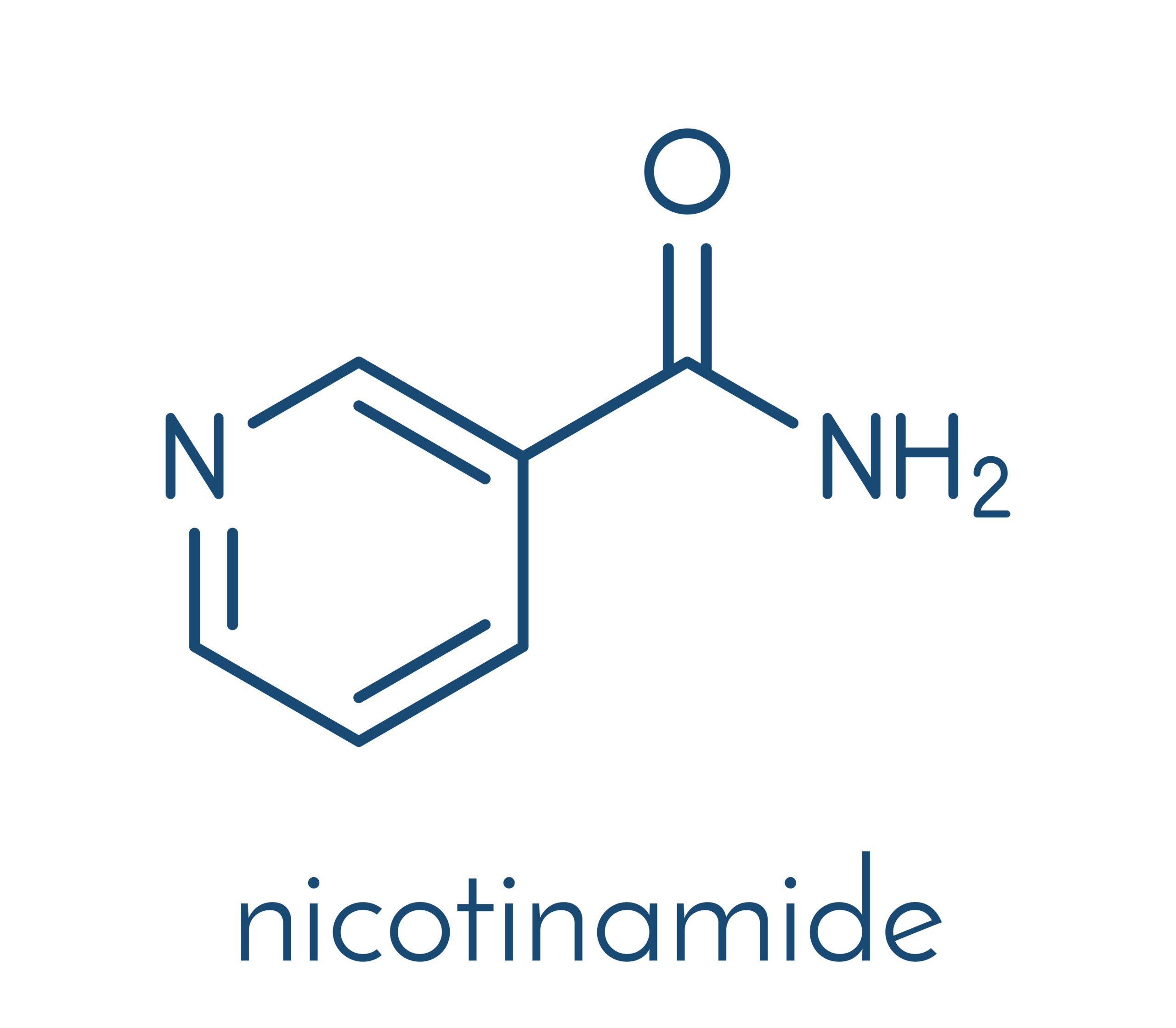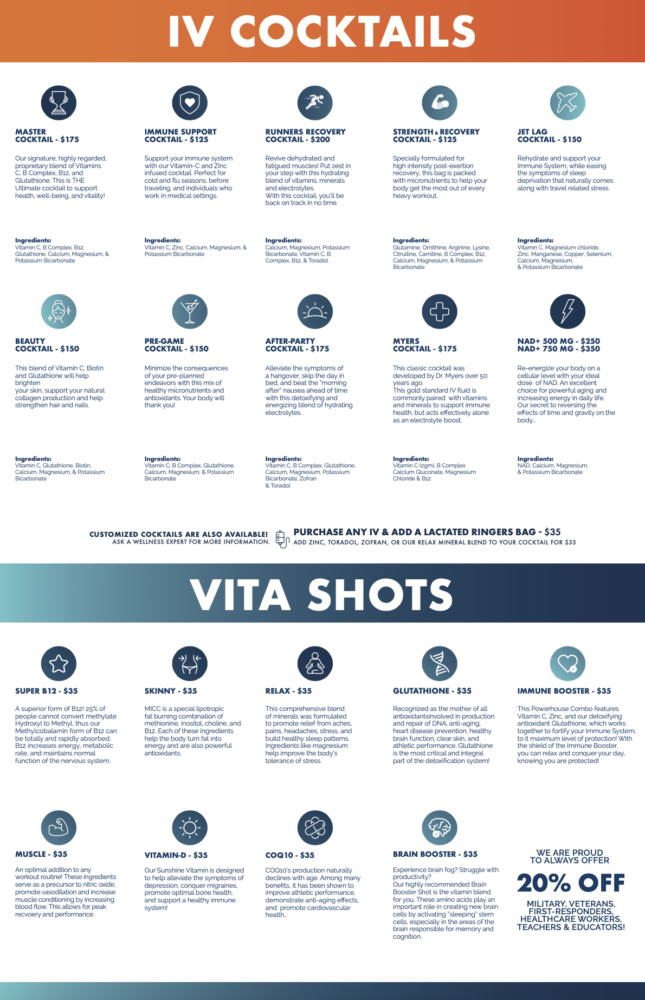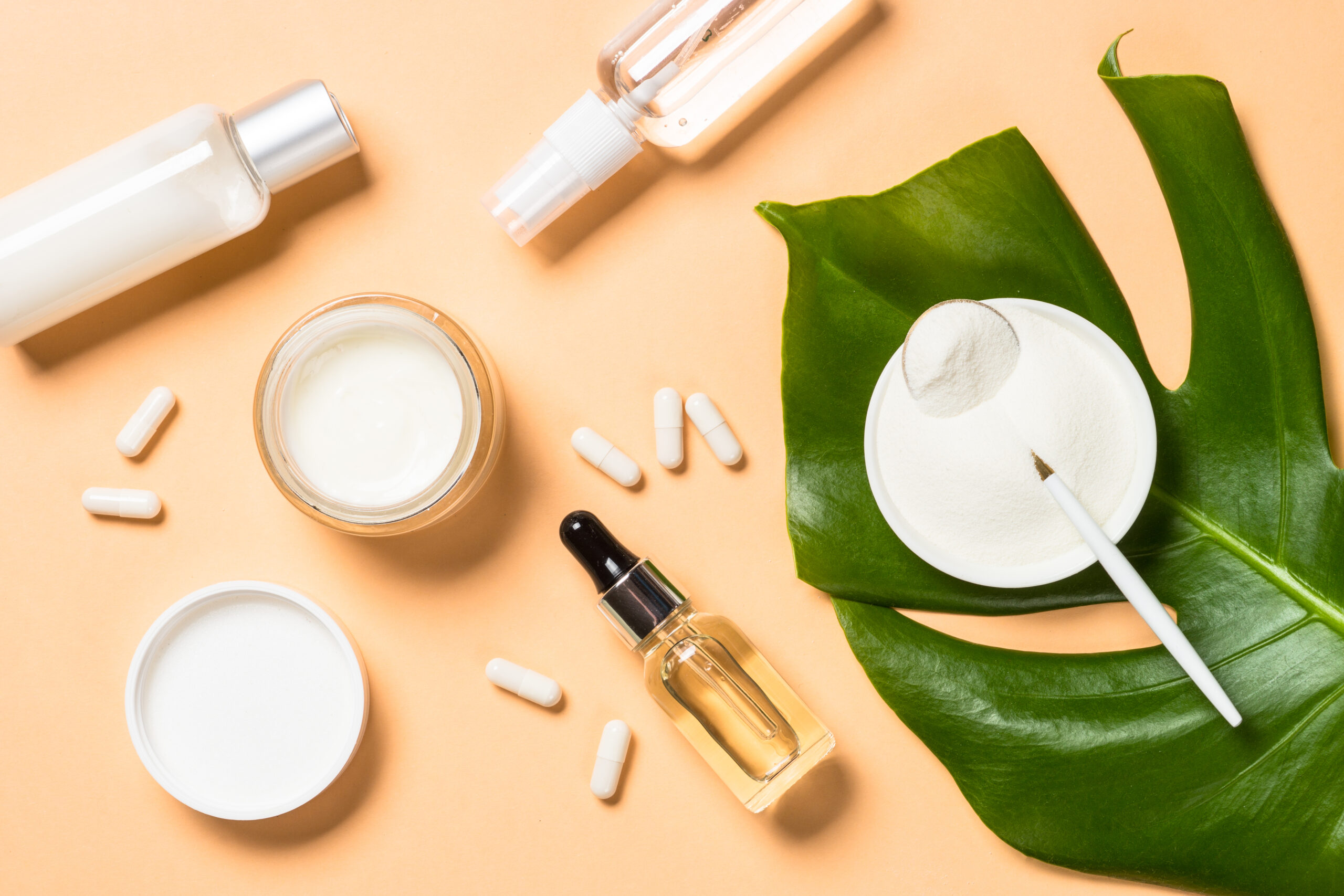NAD+: The Body’s Ultimate Regulator-
What is NAD+?
NAD stands for nicotinamide adenine dinucleotide. It is a coenzyme found in, and produced by, every living cell in your body. This coenzyme has a role in regulating metabolism and your circadian rhythm (“body clock”). Recently, it has also been found to have a possible role in cellular longevity, oxidative metabolism, aging, and life span. Recent research has been examining the use of NAD in the prevention and treatment of some diseases.
Why is NAD Important?
It is a key ingredient for energy production within the human cell. When the cell has energy, it can perform its function. For example, a liver cell can help detoxify, a heart cell can make the heartbeat, a nerve cell can help muscle contract, a thyroid cell can produce thyroxine. Within the cells, energy is produced in the Mitochondria, by a molecule called Adenosine TriPhosphate (ATP).
This means that there are three Phosphate molecules attached to a molecule of Adenosine. ATP is the primary source of energy in the human body. Energy is produced when one of the Phosphate bonds are broken. NAD is a key ingredient used by the mitochondria to generate ATP. Think of Mitochondria as a power plant and it as the raw ingredients for the plant.
Unfortunately, certain processes deplete the levels within the body. Research has determined that its levels decline by over 50% after the age of 40. These low levels mean the mitochondria do not have the necessary ingredients to sufficient generate energy. This condition is referred to as “mitochondrial inefficiency”. Inefficient mitochondria lead to inefficient cells and, ultimately, an inefficient system. Inefficient cells lead to inefficient organs, bodily systems and a tired person left with little vitality.
Overeating processed foods, toxin exposure, excess calories, sleep deprivation, over training, sedentary lifestyle and viral infections can all lead to a depletion of NAD. The mitochondria are over worked in these situations. Eventually, activity and vitality steadily decline as its levels drop. Visible signs and indications of aging become more apparent as the demand for NAD exceeds the dwindling supply.
How do we get NAD?
Essentially, it is a natural coenzyme made from Vitamin-B3 (Niacin). One of the best ways to increase it is by the regular consumption of foods rich in Vitamin-B3 such as cow’s milk, mushrooms, fish, green vegetables, and yeast. Fasting and exercise have also been found to increase the production of NAD. However, many of the foods available today are nutritionally depleted, particularly processed foods. While consumption of nutritional foods may offer some benefit, many people simply have difficulty eating so much.
If consumption alone is not sufficient, other alternatives are available. Supplementation has also been an effective and efficient way to boost your NAD+ levels. However, oral supplementation of it is limited by its inability to enter cells directly. The body must first break it down into smaller particles. Once they are within the cell, the particles must be reassembled. Most of the it is lost or degraded in this cumbersome and inefficient process.
The best way to supplement this coenzyme is through Vitamin-B3 supplements, which create it within the cell. There are 3 primary forms of Vitamin-B3: niacin, nicotinamide, and nicotinamide riboside. Niacin can cause the unpleasant side effect of flushing (redness of the face) and may also drop your blood pressure, making you feel lightheaded. Nicotinamide does not cause this effect but is quite ineffective in increasing it.
Nicotinamide riboside is the best of all worlds. It is well tolerated with minimal side effects and effective at increasing NAD levels. The very best method to supplement Vitamin-B3 is through intravenous (IV) administration. Here, the supplement is infused directly into the bloodstream, giving it immediate access to the cells. IV NAD infusions bypass the harsh environment of the digestive tract providing nearly 100% bioavailability.
What else does NAD do?
It also helps Sirtuins, which are the regulators of cell aging. In addition, it helps the function of poly (ADP-ribose) polymerases (PARPs) that play an active role in DNA repair. Together, they repair damaged cells and help mediate the aging process. So, if there were insufficient NAD, cell repair would be impaired, as will the body’s ability to respond to stress. If you have been undergoing emotional, psychological, or physical stress, it may be time to explore NAD infusion (IV) therapy if you want to feel revitalized.
If you want to reap all the benefits that NAD has to offer just visit our website to schedule your appointment today!







